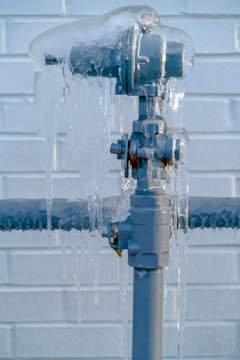Protecting Against Frozen Pipes in Winter: Professional Strategies
Protecting Against Frozen Pipes in Winter: Professional Strategies
Blog Article
Here in the next paragraphs you might get lots of helpful ideas relating to How to Prevent Your Pipes From Freezing.

Winter can ruin your plumbing, specifically by freezing pipes. Right here's just how to prevent it from happening and what to do if it does.
Introduction
As temperature levels decline, the threat of frozen pipes rises, possibly resulting in pricey repair work and water damages. Comprehending how to prevent icy pipelines is critical for home owners in cold environments.
Recognizing Frozen Pipes
What causes pipelines to freeze?
Pipelines ice up when exposed to temperature levels listed below 32 ° F (0 ° C) for extended durations. As water inside the pipes freezes, it expands, putting pressure on the pipeline wall surfaces and potentially causing them to rupture.
Risks and damages
Frozen pipes can result in water disturbances, residential or commercial property damages, and pricey repair services. Ruptured pipes can flood homes and create comprehensive structural damages.
Indications of Frozen Water Lines
Identifying icy pipes early can prevent them from bursting.
Just how to recognize frozen pipes
Seek decreased water flow from taps, uncommon odors or noises from pipes, and noticeable frost on revealed pipelines.
Avoidance Tips
Insulating prone pipelines
Wrap pipelines in insulation sleeves or make use of warmth tape to secure them from freezing temperature levels. Focus on pipelines in unheated or external areas of the home.
Heating strategies
Keep interior rooms adequately warmed, especially locations with plumbing. Open up cupboard doors to enable warm air to flow around pipelines under sinks.
Protecting Outdoor Plumbing
Yard tubes and outdoor faucets
Detach and drain pipes garden tubes prior to wintertime. Set up frost-proof faucets or cover outdoor taps with protected caps.
What to Do If Your Pipelines Freeze
Immediate actions to take
If you presume icy pipes, keep faucets open up to ease stress as the ice thaws. Use a hairdryer or towels taken in warm water to thaw pipelines gradually.
Long-Term Solutions
Architectural changes
Consider rerouting pipes away from exterior walls or unheated areas. Add extra insulation to attic rooms, cellars, and crawl spaces.
Updating insulation
Buy high-quality insulation for pipelines, attic rooms, and walls. Proper insulation aids maintain regular temperature levels and lowers the threat of frozen pipes.
Verdict
Stopping frozen pipelines needs proactive actions and fast reactions. By comprehending the causes, indications, and preventive measures, property owners can secure their plumbing during winter.
5 Ways to Prevent Frozen Pipes
Drain Outdoor Faucets and Disconnect Hoses
First, close the shut-off valve that controls the flow of water in the pipe to your outdoor faucet. Then, head outside to disconnect and drain your hose and open the outdoor faucet to allow the water to completely drain out of the line. Turn off the faucet when done. Finally, head back to the shut-off valve and drain the remaining water inside the pipe into a bucket or container. Additionally, if you have a home irrigation system, you should consider hiring an expert to clear the system of water each year.
Insulate Pipes
One of the best and most cost-effective methods for preventing frozen water pipes is to wrap your pipes with insulation. This is especially important for areas in your home that aren’t exposed to heat, such as an attic. We suggest using foam sleeves, which can typically be found at your local hardware store.
Keep Heat Running at 65
Your pipes are located inside your walls, and the temperature there is much colder than the rest of the house. To prevent your pipes from freezing, The Insurance Information Institute suggests that you keep your home heated to at least 65 degrees, even when traveling. You may want to invest in smart devices that can keep an eye on the temperature in your home while you’re away.
Leave Water Dripping
Moving water — even a small trickle — can prevent ice from forming inside your pipes. When freezing temps are imminent, start a drip of water from all faucets that serve exposed pipes. Leaving a few faucets running will also help relieve pressure inside the pipes and help prevent a rupture if the water inside freezes.
Open Cupboard Doors
Warm your kitchen and bathroom pipes by opening cupboards and vanities. You should also leave your interior doors ajar to help warm air circulate evenly throughout your home.

Hopefully you enjoyed reading our excerpt on Prevent Frozen Pipes . Thanks a lot for taking a few minutes to read through our short article. Enjoyed reading our posting? Please quickly share it. Let other people discover it. Many thanks for your time. Come back soon.
View Report this page